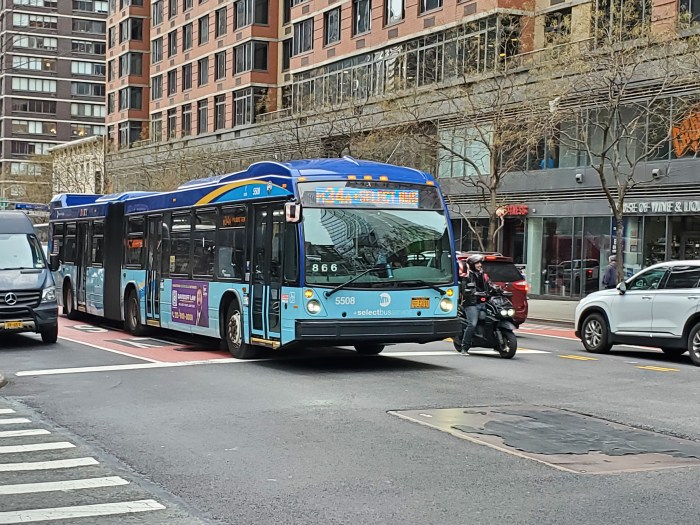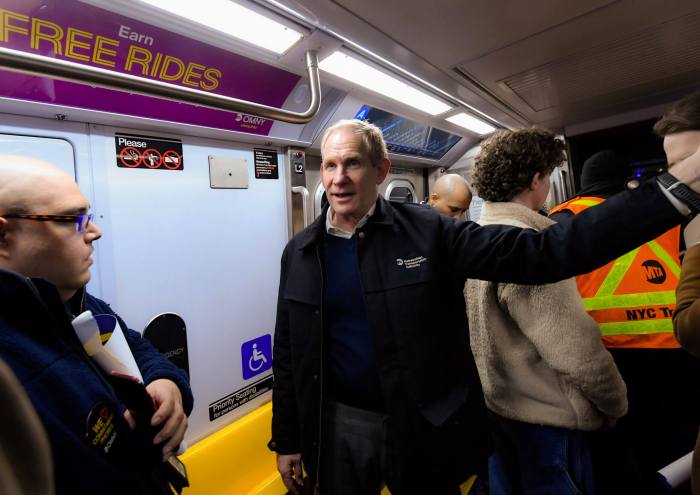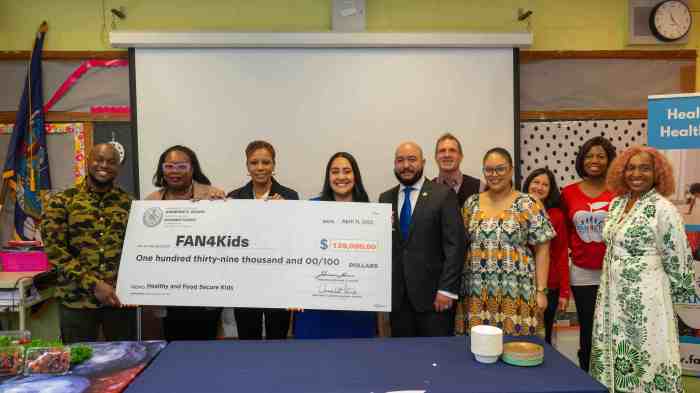The MTA’s free bus pilot kicked off Sunday, Sept. 24, with one route in each borough waiving fares for at least six months as the transit agency studies the impact on service delivery, bus speeds, and ridership.
The pilot program, announced in April’s state budget agreement and funded with $15 million from Albany, will last at least until March 30, 2024, but could be extended for an additional six months beyond that, depending on the results of the pilot.
The five bus routes where fares are now waived are the Bx18 in the Bronx, the B60 in Brooklyn, the M116 in Manhattan, the Q4 in Queens, and the S46/96 in Staten Island. The routes were selected based on their limited overlap with other subway or bus lines, socioeconomic conditions along the routes, existing capacity, and access to employment centers, among other factors.
Each bus along the five routes is fitted with distinct green digital signage noting the line is fare-free, and the OMNY readers and MetroCard slots on the buses have been covered with green signs noting fares are waived. Signage noting the fare-free pilot is also present at bus stops.
Paratransit trips on Access-a-Ride will also be free during the pilot period, provided rides begin and end within three-quarters of a mile of the fare-free bus routes.
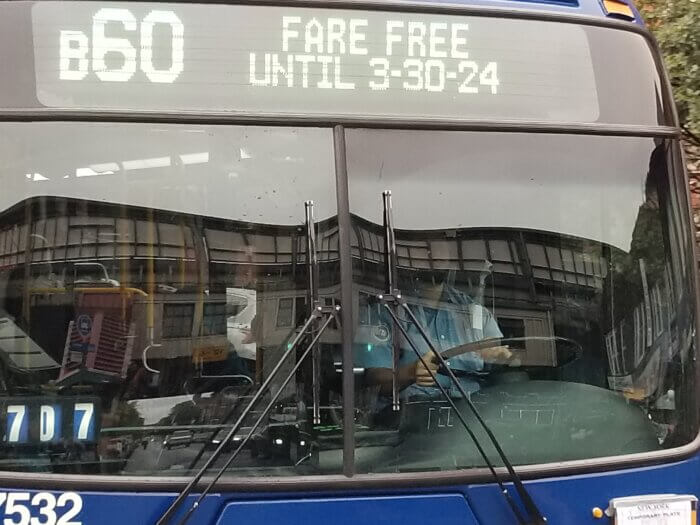
On the B60, Bedford-Stuyvesant resident CeCe Spencer said she was excited that she would get to keep some money in her pocket during her commute, especially after the MTA hiked subway and bus fares to $2.90 this summer.
“You know, I appreciate that. Because actually, the cost of living on top of raising the fare, it’s not good, it’s not conducive to us,” said Spencer. “If you ride this bus normally, it definitely saves money.”
New York is the latest city to experiment with free bus service. Kansas City has had free bus and streetcar service since 2019, and transit officials there say ridership has increased and passengers have responded positively, while Boston has made three of its bus routes free through February of next year.
Free bus service was not initially supported by Gov. Kathy Hochul, but state lawmakers sought to include the pilot in this year’s budget as a condition of the MTA’s larger financial rescue plan, which saw an increase in payroll taxes and a promise of future casino revenue to prop up the fiscally-beleaguered authority as it struggles to return to pre-pandemic ridership.
Lawmakers had originally wanted to make two lines in each borough free but settled for one. The five routes serve about 43,900 riders each weekday, the MTA says, a sliver of the more than 1 million riders who take the bus each day across the five boroughs.
Still, the MTA is taking pains to remind riders of the pilot’s limitations, in the hopes they don’t think the buses are free permanently nor that fares are waived on other lines. Most of the physical and digital signage denoting the pilot explicitly notes the benefit is only in effect until March; signage also notes that transfers to the subway or other bus lines require paying the fare.
Transit officials will evaluate the impacts of the pilot on service delivery, ridership (through automated passenger counters onboard), and bus speeds, but last week, MTA Chair Janno Lieber threw cold water on the idea of making all buses free, which some lawmakers had originally sought this year.
“There’s no room for losing a couple billion dollars of bus revenue in [the budget] plan right now,” Lieber told reporters following the MTA’s monthly board meeting. “There are five free buses, and we gave our commitment and we’re executing on it, that we would implement those as the legislature asked, and we’re doing our best to get information from the free bus routes to see what we can all learn about it. But there’s no money in the MTA budget for suddenly giving up bus revenue.”
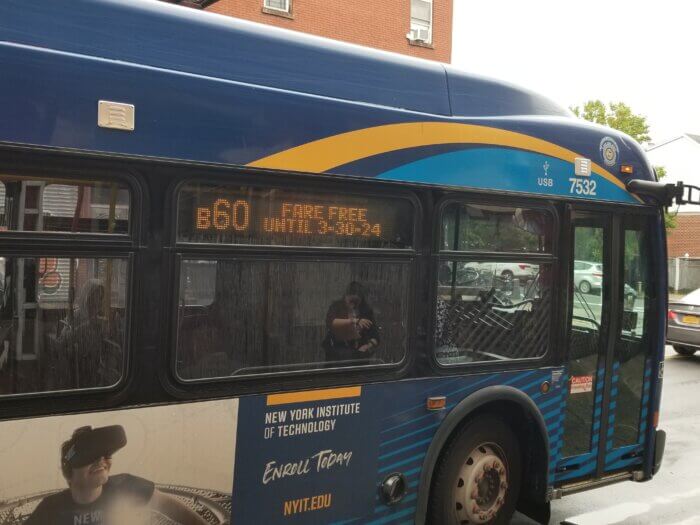
Riders like Spencer are also cognizant that the good times probably won’t last forever.
“I guess in good graces they want you to feel comfortable now, you know, the cost of living on top of fare increases, so they have to give us something,” said Spencer. “But to make it a normality, I don’t think so. They be losing too much money.”
New York’s buses are the slowest in the nation, with a pitiful average speed of 8.2 miles per hour. The free bus routes in the Bronx, Brooklyn, and Manhattan are all slower than the citywide average, with the M116 puttering along at just 5.8 miles per hour. Bus riders contend with oppressive traffic, frequent stops, and oftentimes drivers double-parked in bus lanes.
The pilot comes as the MTA aggressively seeks to stamp out fare evasion in the system, which cost the authority nearly $700 million in revenue last year and continues to grow. The problem is particularly pronounced on buses, where officials have fewer obvious options to deter it than on the subway, where the MTA is seeking to redesign its turnstiles and place guards at fare gates.
The MTA has beefed up its “Eagle” teams of fare inspectors on buses, deploying them to bus stop “hubs” with high rates of fare evasion. Eagle teams have long enforced fare payment on Select Bus Service lines, but are now being deployed to local routes.
The MTA estimates about 37% of bus passengers do not pay the fare. The issue has become more pronounced since the height of the COVID-19 pandemic, when fare collection was suspended on buses to keep drivers safely isolated from riders; collection resumed after five months, but many riders haven’t gotten the memo.






